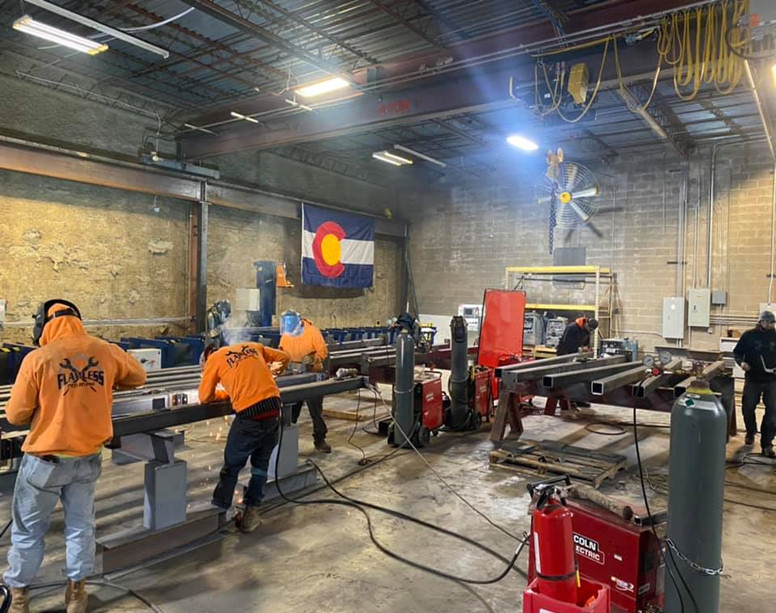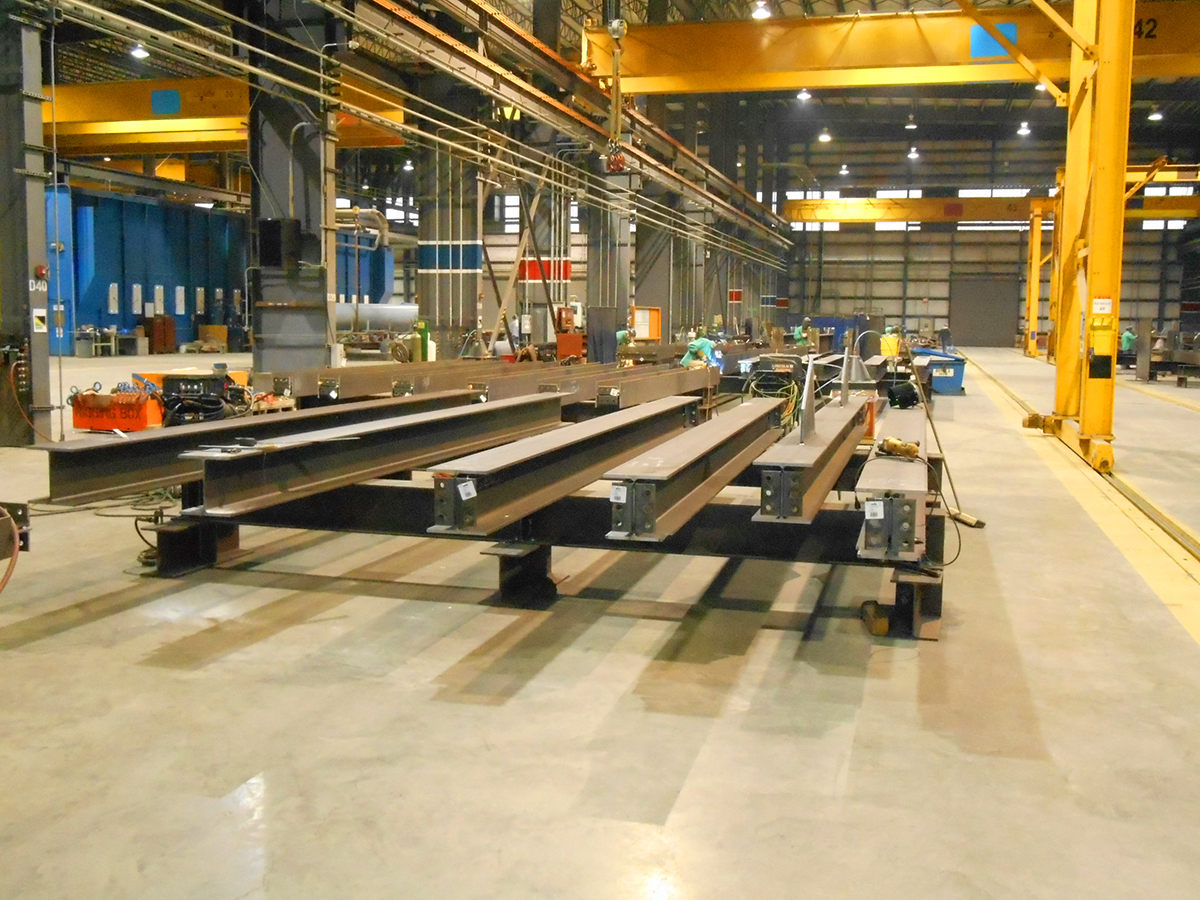Steel Fabrication Melbourne: Craftsmanship Fulfills Innovation
Steel Fabrication Melbourne: Craftsmanship Fulfills Innovation
Blog Article
Ingenious Fads in Steel Construction: Enhancing Resilience and Precision
In the realm of steel fabrication, the quest of toughness and accuracy has actually led to a wave of innovative fads that are improving the market. These patterns are not simply forming the existing however additionally laying the groundwork for the future of steel construction, guaranteeing further improvements in resilience and precision.
Advanced Welding Technologies
In the realm of steel construction, the adoption of advanced welding innovations has actually substantially revolutionized the industry's approach to accomplishing remarkable high quality and precision in architectural welds. Advanced welding technologies, such as laser beam welding and rubbing stir welding, have emerged as game-changers in the field. Laser beam welding employs a focused laser beam to sign up with steel elements with exceptional accuracy and speed, making it perfect for elaborate designs and thin products. On the various other hand, friction stir welding creates unbelievably solid bonds by mechanically intermixing the molecules of the materials at the joint, removing the requirement for melting the metal. These modern technologies use many benefits, consisting of minimized heat-affected zones, minimal distortion, and boosted mechanical properties in the bonded joints. By leveraging these sophisticated welding techniques, steel makers can elevate the durability, toughness, and precision of their architectural welds, satisfying the significantly demanding demands of modern-day construction projects.
Robotic Automation in Manufacture
Embracing robotic automation has actually ended up being a keystone of contemporary steel fabrication techniques, enhancing and simplifying procedures performance throughout the market. Robots are transforming the method steel elements are manufactured, offering unrivaled accuracy and speed while lowering human mistake. These automated systems can take care of repeated tasks with consistent precision, bring about better final result.
One secret advantage of robot automation in steel manufacture is the capacity to function all the time without exhaustion, substantially boosting production outcome. This constant procedure reduces downtime and accelerates project timelines, ultimately saving costs for makers. In addition, robotics can be configured to execute intricate tasks that may be challenging or unsafe for human workers, enhancing safety and security in the office.
In addition, robotic automation allows seamless assimilation with other digital innovations, such as computer-aided layout (CAD) software program and Internet of Things (IoT) systems (steel fixing). This interconnected strategy enhances communication in between various stages of fabrication, optimizing process and making certain real-time monitoring and control. As the steel construction market remains to develop, robotic automation sticks out as a transformative pressure driving efficiency and accuracy in producing processes

High-Strength Alloy Advancement
The innovation of high-strength alloy development in steel fabrication is improving the industry's method to boosting product resilience and efficiency. High-strength alloys are crafted to show remarkable mechanical buildings, such as increased tensile stamina, durability, and rust resistance contrasted to traditional steel grades. By integrating these innovative alloys right into fabrication procedures, suppliers can generate parts that hold up against greater stress and anxiety degrees and rough atmospheres, causing even more long lasting and trustworthy final product.
One trick advantage of high-strength alloy development is the ability to lower product density without endangering architectural stability. This not only causes lighter-weight elements yet additionally contributes to cost savings and improved performance in fabrication and assembly processes. In addition, the enhanced strength-to-weight ratio of these alloys permits for the style and construction of frameworks with higher load-bearing capacities while reducing overall weight.
3D Modeling and Simulation Software Application
Developments in steel manufacture processes have find been significantly driven by the integration of sophisticated 3D modeling and simulation software devices. These tools enable makers to create in-depth digital models of their tasks, enabling them to picture the last product with precision before any type of physical work begins. By mimicing different anxiety aspects, ecological problems, and structural tons, makers can enhance layouts for enhanced toughness and performance. Furthermore, 3D modeling and simulation software program streamline the production process by determining possible issues at an early stage, minimizing the demand for pricey rework and decreasing material waste.

Sustainable Practices in Steel Manufacturing
Incorporating lasting practices into steel production processes is important for decreasing environmental effect and ensuring long-lasting source availability. One vital sustainable technique is the adoption of energy-efficient modern technologies to minimize greenhouse gas emissions during the steel production process. This includes using renewable resource resources, such as solar or wind power, to power steel plants and implementing energy-efficient devices to maximize energy use.
Another important facet of sustainable steel production is the accountable sourcing of resources. This entails ensuring that the iron ore and various other resources used in steelmaking are obtained from ecologically pleasant here are the findings and ethical resources. By promoting transparency in the supply chain and adhering to stringent ecological criteria, steel suppliers can minimize the negative effects of resource extraction on regional ecological communities and communities.

Conclusion
Finally, the innovative fads in steel manufacture such as advanced welding innovations, robotic automation, high-strength alloy advancement, 3D modeling and simulation software, and lasting techniques are improving the resilience and precision of steel items. These improvements this are changing the steel construction industry by boosting quality, sustainability, and efficiency. It is clear that the future of steel fabrication depends on embracing these sophisticated technologies to meet the demands of modern-day building and construction and manufacturing sectors.
In the world of steel fabrication, the search of toughness and precision has actually led to a wave of cutting-edge fads that are reshaping the industry.In the world of steel fabrication, the adoption of innovative welding technologies has substantially transformed the market's method to achieving premium high quality and precision in structural welds. As the steel fabrication market continues to evolve, robotic automation stands out as a transformative pressure driving performance and precision in making processes.
Moreover, recycling and recycling steel scrap and waste materials play a significant function in enhancing the sustainability of steel production. Alpha reo.In conclusion, the innovative patterns in steel fabrication such as advanced welding modern technologies, robotic automation, high-strength alloy growth, 3D modeling and simulation software program, and lasting practices are improving the resilience and accuracy of steel products
Report this page